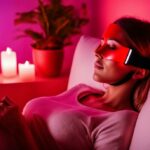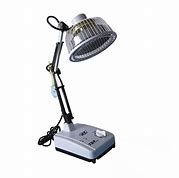?
Light therapy, also known as phototherapy or LED therapy, is a newer form of skincare treatment that uses different wavelengths of light to achieve various results. Despite being a relatively new technique, many beauty enthusiasts and professionals have been using light therapy to treat various skin conditions. One common question people ask is whether light therapy can be used on the face. In this article, we will explore the benefits, risks, and different types of light therapy that can be used on the face.
Contents
Understanding Light Therapy
Light therapy is a non-invasive treatment that uses specific wavelengths of light to penetrate the skin’s surface, stimulating cellular activity and promoting healing. It has been used to treat various skin conditions, including acne, eczema, and psoriasis, as well as to improve skin tone, texture, and overall appearance. Light therapy is also effective in treating seasonal affective disorder (SAD), a type of depression that occurs during the winter months when natural light is limited. Additionally, it has been used to improve sleep, reduce inflammation, and promote wound healing.
How Light Therapy Works
Light therapy works by emitting specific wavelengths of light that penetrate the skin’s surface and stimulate cellular activity. The light energy is absorbed by the skin’s cells, triggering a series of metabolic reactions that promote healing and rejuvenation. The wavelength of light used depends on the condition being treated. For example, blue light is used to treat acne, while red light is used to improve skin texture and promote wound healing.
Types of Light Therapy
There are different types of light therapy, including:
- Blue light therapy
- Red light therapy
- Green light therapy
- Yellow light therapy
- Infrared light therapy
Each type of light therapy has its unique benefits and applications. Blue light therapy is effective in treating acne, while red light therapy is used to improve skin texture and promote wound healing. Green light therapy is used to reduce hyperpigmentation, while yellow light therapy is used to reduce redness and inflammation. Infrared light therapy is used for pain relief, wound healing, and anti-aging.
Light Therapy for Skin
Benefits of Light Therapy for Skin
Light therapy has been shown to provide various benefits to the skin, including:
- Reduced appearance of fine lines and wrinkles
- Improved skin firmness and elasticity
- Reduced hyperpigmentation and age spots
- Improved skin texture and tone
- Reduced acne and acne scars
Using Light Therapy on the Face
Light therapy can be used on the face for various skin conditions, including acne, rosacea, and aging. When used for acne, blue light therapy targets the bacteria that cause acne, while red light therapy reduces inflammation and promotes healing. Green light therapy is used to reduce hyperpigmentation and redness, while yellow light therapy is used to reduce inflammation and redness.
Light Therapy vs. Other Skin Treatments
Light therapy is a non-invasive treatment that does not involve any chemicals or surgery, making it an attractive option for those looking for a natural approach to skin care. Unlike other skin treatments, light therapy does not cause any damage to the skin’s surface and does not require any downtime. It is also less costly than other skin treatments, making it a more accessible option for many people.
Misconceptions and Gaps in Understanding
Misconceptions about Light Therapy
One common misconception about light therapy is that it is harmful to the skin. However, light therapy is a safe and effective treatment when used correctly. Another misconception is that light therapy is only useful for treating acne. While it is true that light therapy is effective in treating acne, it is also useful for improving skin texture, reducing hyperpigmentation, and promoting wound healing.
Gaps in Understanding
While light therapy is a safe and effective treatment, there are still gaps in our understanding of how it works and its long-term effects. More research is needed to determine the optimal wavelength of light for different skin conditions and to understand how light therapy affects the skin at a cellular level. Additionally, more studies are needed to determine the long-term effects of light therapy on the skin.
FAQs: Can Light Therapy be Used on Face?
What is light therapy and how does it work on the face?
Light therapy, also known as phototherapy, is a non-invasive treatment that uses specific wavelengths of light to treat skin problems such as acne, fine lines, wrinkles, and hyperpigmentation. This therapy works by penetrating the skin and stimulating the cells. The light interacts with molecules in the skin cells, triggering a photochemical reaction that induces healing responses, such as increasing collagen production, reducing inflammation, and killing bacteria.
What are the benefits of using light therapy on the face?
Using light therapy on the face can help address several skin concerns, such as reducing the appearance of fine lines and wrinkles, improving skin tone and texture, and reducing acne breakouts. It is also a non-invasive and painless treatment option that doesn’t require any downtime. Light therapy has been shown to stimulate the production of collagen, which can help improve the elasticity of the skin, making it appear smoother and more youthful.
Are there any risks associated with light therapy on the face?
Generally, light therapy is considered a safe and effective treatment option for various skin conditions. However, there are few mild side effects such as redness, itching, and skin sensitivity that may occur after the treatment, but these are usually temporary and resolve within a few hours. Moreover, light therapy should not be used on the face if you are taking any medications that make your skin more sensitive to light, such as isotretinoin, or have any medical condition that makes your skin more sensitive to light.
How often should one use light therapy on the face?
The frequency of light therapy sessions for the face will depend on the individual’s skin condition and the type of device being used. Typically, one can expect to have a series of sessions over a few weeks, with each session lasting approximately 15 to 30 minutes. After the initial treatment period, maintenance sessions may be required depending on the individual’s goals and skin condition. It is always recommended to consult with a licensed skincare professional before starting light therapy treatment.
What types of light therapy are suitable for use on the face?
There are different types of light therapy devices available that are specifically designed for use on the face. Blue light therapy is commonly used for the treatment of acne, while red light therapy is used for anti-aging benefits such as reducing the appearance of fine lines and wrinkles. Some devices also feature near-infrared and green light, which can help with reducing inflammation and improving skin tone and texture. It is important to select the right device and wavelengths for your skin concerns, and it is always recommended to seek professional advice before starting any light therapy treatment on your face.








